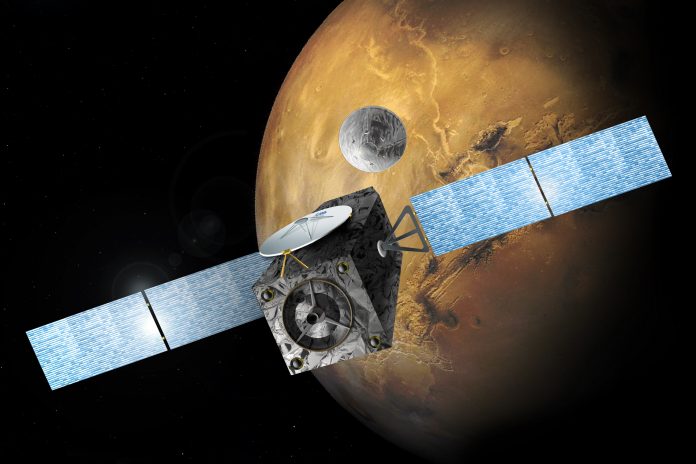
Today October 19, 2016, the Entry, Descent and Landing Demonstrator Module (EDM) of the ExoMars project landed on Mars. The goal of the ExoMars (Exobiology on Mars) project is to search for signs of past and present life on Red Planet.
The European Space Agency (ESA) and Roscosmos State Corporation launched the Schiaparelli EDM lander, together with the ExoMars Trace Gas Orbiter (TGO), back in March. The scientists are waiting for a status update on the Schiaparelli to learn if the device landed correctly.
A joint two-part mission of the ESA and Roscosmos, the launch of the TGO and the Schiaparelli was the first stage of the ExoMars project. If the landing were indeed a success, the Schiaparelli would test new key landing technologies for the 2020 mission which will feature the ExoMars rover.
Meanwhile, the TGO will begin atmospheric mapping in 2017. The orbiter will study gasses present in the Martian atmosphere, including methane, which could be evidence for possible biological or geological activity.
Exploring the Red Planet has proven to be a tough task to accomplish. NASA, the Soviet Union, Russia, India and the ESA have launched 43 missions. 23 of them failed, 18 succeeded, and the remaining two were only partially successful.
Schiaparelli is Europe’s first attempt to land a spacecraft on Mars since 2003
The Beagle 2 showed how difficult landing a shuttle on Mars is. The British landing spacecraft formed part of ESA’s Mars Express mission. Launched on December 19, 2003, the craft lost contact with Earth during its final descent on December 25.
Following several attempts to communicate with the Beagle 2, the ESA declared the mission lost in February 2004. The fate of the Beagle 2 remained unknown until January 2015, after nearly twelve years missing.
NASA’s Mars Reconnaissance Orbiter HiRISE camera located the spacecraft intact on the surface of Mars. The images also suggested that two of the Beagle’s four solar panels failed to deploy, blocking its communications antenna.
Initially, the ExoMars project was a NASA and ESA collaboration
The Schiaparelli lander is ESA’s second chance after more than a decade. It all started with the approval of the ExoMars project by the European Space Agency ministers in December 2005. NASA then joined ESA by signing the Mars Exploration Joint Initiative (MEJI) in 2009.
However, in February 2012, NASA backed out of ExoMars due to budget cuts. In March 2013, Russia’s Roscosmos replaced the United States as a full partner. Roscosmos has been cooperating on ESA’s ExoMars since August 2009.
With the atmospheric probe (TGO) already in orbit and the stationary lander (Schiaparelli) hopefully in place, the ExoMars rover should follow in 2020. The planned robotic Mars rover will support a science mission that is set to last until 2022.
Source: Reuters











